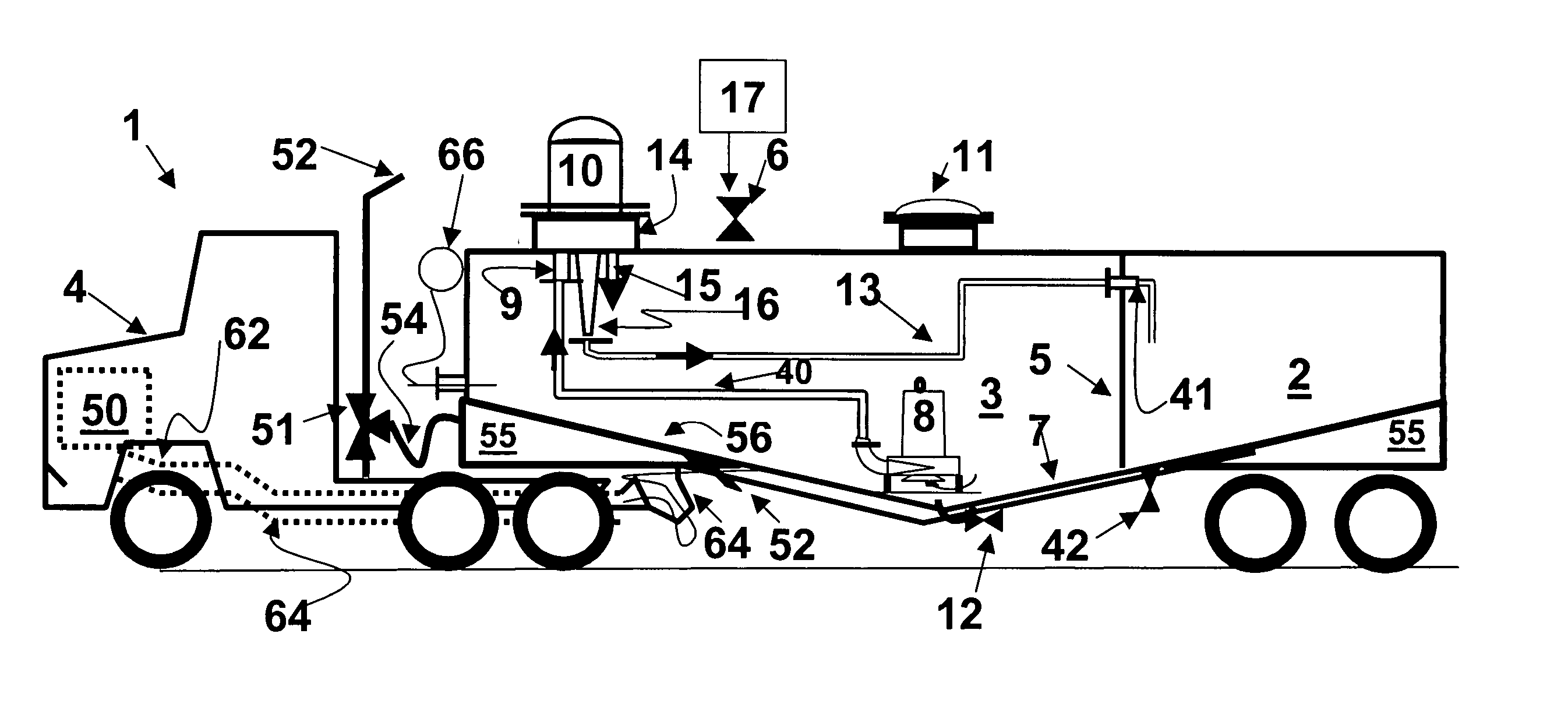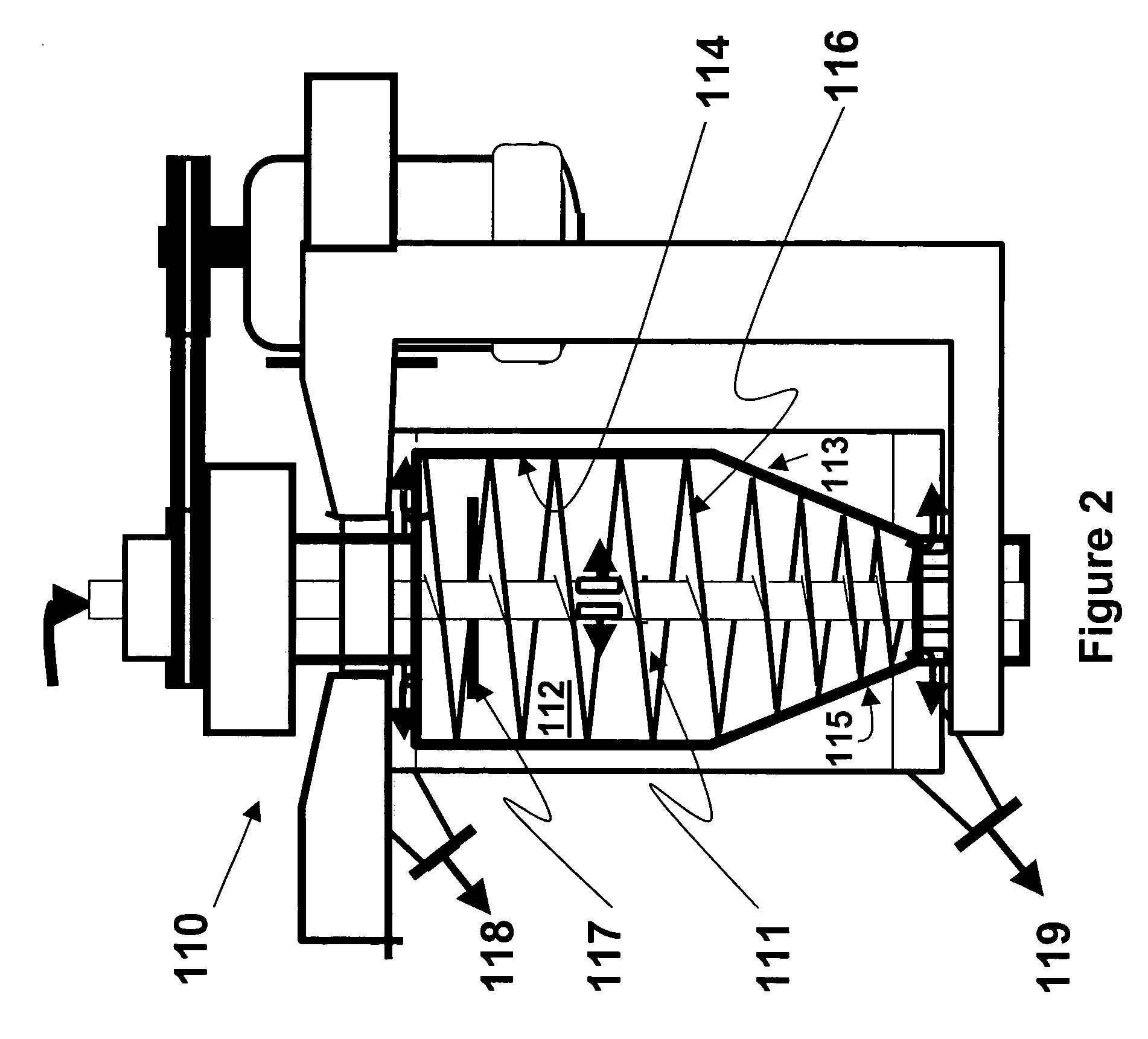Separation system for the removal of fat, oil or grease from wastewater
a technology for wastewater and separation systems, applied in separation processes, filtration separation, multi-stage water/sewage treatment, etc., can solve the problems of organic phase suspended, blockage of wastewater piping, and inability to simply dispose of aqueous phase into sewer lines, etc., to accelerate the separation of aqueous phas
- Summary
- Abstract
- Description
- Claims
- Application Information
AI Technical Summary
Benefits of technology
Problems solved by technology
Method used
Image
Examples
example
[0054] A portable tank with an empty mixed organic / aqueous compartment and an empty separated aqueous container is connected to a grease trap containing wastewater, and the process of emptying the grease trap is initiated. The total contents of the grease trap are pumped into the mixed organic / aqueous compartment that is housed on a truck bed. After the hoses have been disconnected and the mixed organic / aqueous compartment is sealed, a grinder pump is set to recycle and the contents of the mixed organic / aqueous container are heated to a temperature of from about 60° C. to about 70° C. Once the contents of the mixed organic / aqueous container reach the temperature of about 60° C. to about 70° C., a centrifugal separator is actuated and the discharge from the grinder pump is directed to the centrifugal separator. The centrifugal separator separates the aqueous phase from the organic phase of the wastewater and the aqueous phase is piped into the separated aqueous container where the co...
PUM
| Property | Measurement | Unit |
|---|---|---|
| diameter | aaaaa | aaaaa |
| diameter | aaaaa | aaaaa |
| diameters | aaaaa | aaaaa |
Abstract
Description
Claims
Application Information
 Login to View More
Login to View More - R&D
- Intellectual Property
- Life Sciences
- Materials
- Tech Scout
- Unparalleled Data Quality
- Higher Quality Content
- 60% Fewer Hallucinations
Browse by: Latest US Patents, China's latest patents, Technical Efficacy Thesaurus, Application Domain, Technology Topic, Popular Technical Reports.
© 2025 PatSnap. All rights reserved.Legal|Privacy policy|Modern Slavery Act Transparency Statement|Sitemap|About US| Contact US: help@patsnap.com



